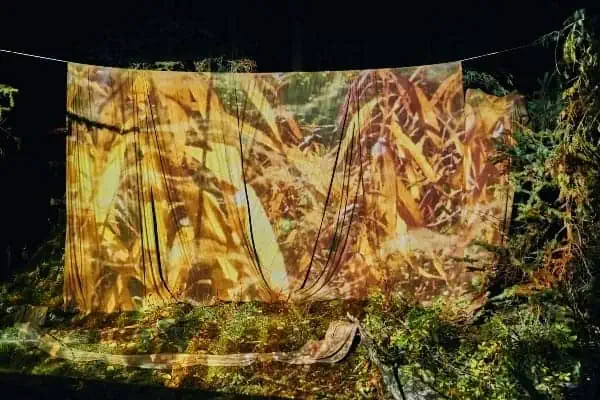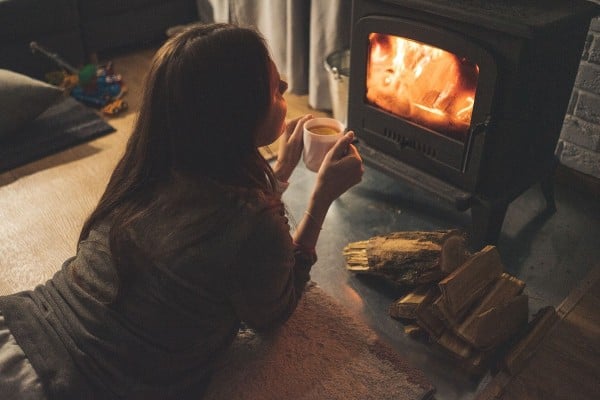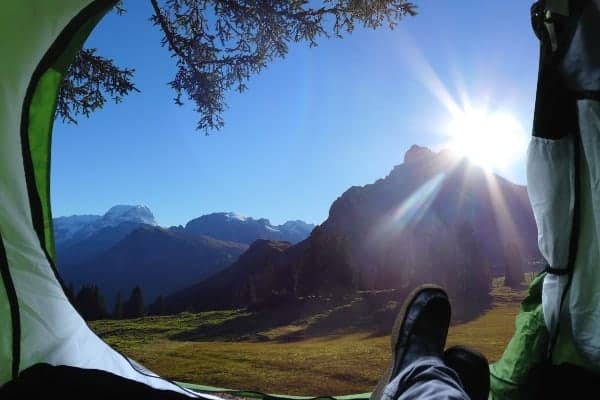Let’s start from the ground up. There’s a reason thick sleeping pads are a hot item, so to speak. The more insulation you have from the ground, the more you’ll increase your warmth. For some of us, that might just look like transferring our summer mats to below zero climate. If you don’t have an inflatable pad, adding insulation to your body through a foam mat, snow, or cut pine boughs will make all the difference in keeping you warm in the night. Extra outer layers stuffed between your sleeping pad and the ground are also a great way to flatten an uneven camp spot.
Sleeping bags have both “comfort” ratings and “lower limit” ratings, based on the International Standards Organization (ISO) that oversees bag testing. Some sleeping bags are also labeled to advertise to a specific gender. Generally, sleeping bags advertised toward women will be of a warmer weight. It’s important to be aware that just because your sleeping bag is rated down to -7 degrees, you might not necessarily be comfortable sleeping at that temperature. If you don’t own or can’t borrow a winter bag, you can increase the weight of your regular bag with a fleece liner, by using a bivy bag on the outside, or by putting your summer bag inside a lighter winter bag.
What you’re looking for in buying or borrowing is to find a bag that has enough space to pull up snugly over your shoulders. This might seem obvious, but the sleeping bag will only keep you warm if you zip it all the way up and pull it over the back of your head. It will also operate the best when you have filled all the empty space in your bag with clothes or other insulants.
When you finally put out the fire and start to take off your boots, make sure to unlace them to prevent them from freezing to the point where you can’t get your feet back into them in the morning! When you crawl into your shelter, try to go into your sleeping system as warm as you can. Your sleeping bag will act as a thermos. If you go into it cold, it will stay cold. If you go into it warm, you’ll likely stay warm. If you’re going in cold, doing sit-ups or flutter kicks in your bag can help increase the heat inside your sleeping system.
Staying dry also becomes incredibly important, so be sure you’re not wearing any wet or damp layers from the day. If those layers are damp and you have to put them on the next morning, they can go inside your sleeping bag (remember that fill-the-space idea?) not on your body and your body heat will keep them from freezing.
Wearing socks follows the same principle as the sleeping bag. If your feet are cold going into them, they will stay cold the whole night. A loose pair of wool socks or down socks will often do the trick.
Other things that can make a difference in your sleeping system are hot water bottles and pee bottles (I know what you’re thinking and, yes, you can have both, just make sure you don’t mix them up). Screw-top Nalgenes make great hot water bottles. Boil some water at the end of the day, pour it into the bottle, wrap it in a shirt and tuck it close to your body. Keeping it close to your armpits or groin will quickly warm up the rest of your body in your sleeping bag and allow you to stay warmer for later in the night.
A pee bottle can be helpful to avoid an unnecessary trip into your wet boots from the day. Depending on your sleeping structure (tent, tarp, or snow shelter), this can make the whole process easier. If you’re not someone with external parts, you might find that a wide Nalgene with a lid or an empty peanut butter jar is a better choice than a bottle. Whatever you choose, choosing to go rather than holding it in will absolutely make you warmer, so that’s something to think about when you wake up in the middle of the night!
Other things to put in inner pockets and “body pack” at night include your phone, contact lens solution, batteries, headlamp and GPS. Anything with a battery or water content is always at risk of freezing, so tucking them into an inside pocket in the night is good practice.
Last but not least, eating and drinking many calories will keep you warmer at night. Often a great joy of winter camping is eating rich, fatty foods.
So whether you’re setting up to ice fish, take off on skis or just camp in your backyard, consider some of these hot tips to stay warm.




